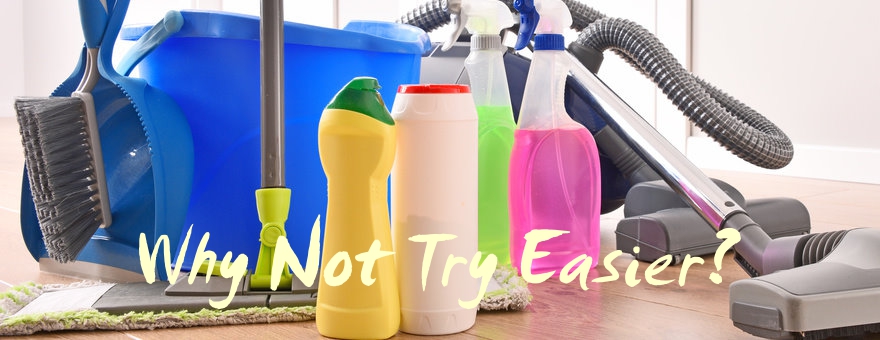
Cleaning & Descaling With Vinegar
Tips Money Can’t Buy
To clean the household in an environmentally friendly and cost-effective way – that is very easy to do with home-made vinegar. In addition, vinegar is one of the best descaling agents.
Vinegar is probably better known to you as a means of food. But besides the use in the kitchen around cooking, the power of vinegar is cleaning and descaling. Cleanadviser shows you how and where to use vinegar in the home.
Vinegar the perfect alternative to many special cleaners. When it comes to cleaning is often but not only of vinegar or vinegar cleaners talk but also of distilled vinegar. What is what and what are the differences?
In principle, it is quite simple: distilled vinegar is the concentrated form of vinegar. That means distilled vinegar consists of 20% up to 30% acetic acid and of 70% up to 80% water, while vinegar only contains 5% acetic acid and 95% water. Therefore, distilled vinegar is the more aggressive cleaner and should always be diluted with water.
In addition, the normal household vinegar produced by a natural fermentation, while the distilled vinegar is usually produced by synthetic methods to achieve such a high acidity. Therefore, no other minerals are included in the distilled vinegar, only acetic acid and water.
A vinegar cleaner is in contrast to distilled vinegar also provided with fragrances or other ingredients for cleaning.
Applications for vinegar or distilled vinegar
remedy
body care
cleaning and descaling
fighting mold
In general, when cleaning with any kind of vinegar, it is important to wear gloves because it is an acid. In addition, it must be well ventilated in the house after use, so that the penetrating smell disappears.
But apart from that, distilled vinegar or vinegar will do you good in cleaning and descaling.
Vinegar for cleaning – in these places in the household she works wonders
Joints: Mix three tablespoons of soda with a tablespoon of water and a teaspoon of distilled vinegar. Apply this cleaning mixture to a toothbrush with which you drive along the dirty joints. After one hour of exposure, moisten a fresh toothbrush with water and remove any dissolved dirt.
Oven: It could hardly be easier: simply pour some distilled vinegar or vinegar into a bowl with water and place in the dirty oven. Then heat the device for about 45 minutes at 150 degrees. As a result, the food deposits easily peel off the walls and bottom of the oven – simply wipe them with a rag.
Windows: Distilled vinegar can be used when cleaning windows to prevent streaks and streaks. The harder the water you use to clean, the more vinegar essence must go into it. Afterwards you can clean your windows as usual. Read more about how to clean your windows like a pro
Toilet: When depositing in a quiet place, simply pour a few tablespoons of distilled vinegar or vinegar into the toilet and wait. Under the edge of the toilet, you come with paper towels on which you dribble the vinegar. Then rinse a few times and wipe again – the bowl will shine again.
Stainless Steel: Mix three tablespoons of soda with a tablespoon of water and a dash of vinegar and you’ll have the perfect cleaner to get stainless steel to shine. Just smear the paste on the affected areas and let them work. For limescale, it also helps to simply mix one part of distilled vinegar and three parts of water to rub in the stainless steel. After half an hour, the agent is washed off with clear water.
Distilled vinegar for descaling – here you can apply it
Shower cabin: Shower walls and doors are always in contact with water – and therefore very prone to limescale. You get rid of them by mixing vinegar with twice the amount of water and applying the mix to the shower walls with a microfiber cloth. If the white spots are removed, you only need to rinse the cabin with cold water.
Showerhead: Dilute distilled vinegar with water and dip a sponge or rag in it. Then place this on the calcified shower head and give the whole one hour exposure time. After that, the debris should have disappeared and you can use your shower properly again.
Toilet Tank: Who lives in regions with very hard water, must descale more often than others – even the toilet tank is not immune to it. For a freestanding tank, simply remove the lid and remove the moving parts. Then pour some vinegar into it and leave it on overnight. The next morning, rebuild all parts and rinse once. Incidentally, this home remedy also helps with a calcified tank.
Great is vinegar also to make milky glasses and decanters clear again.
Simply fill the sink with lukewarm water and then pour a good shot of vinegar into the water. Leave glasses and decanters for about 30 minutes in the sink. Then rinse with clear water.
Is it possible to combat mold with distilled vinegar?
Advisers very often recommend the use of distilled vinegar in case of mold. But more and more it turns out that the supposed mold killer creates a breeding ground for even more mold. That would be because the distilled vinegar is not suitable for every surface and especially lime neutralize the effect of vinegar.
Therefore, when removing mold in the house you can use distilled vinegar but you should check exactly for which materials and surfaces it is suitable.